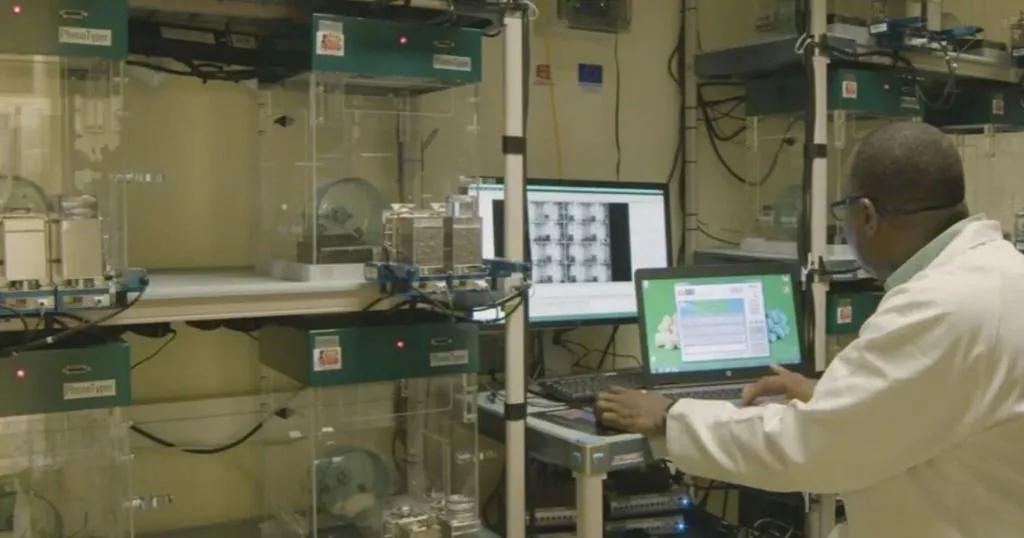Is a unique calcium regulating mechanism a cause of Gulf War Illness?

Gulf War Illness (GWI) is potentially caused by organophosphate exposure. Through behavioral experiments, using a DFP rat model, researchers tested levetiracetam as a potential cure.
Posted by
Published on
Thu 25 Jul. 2019
Topics
| Anxiety | Depression | Elevated Plus Maze | EthoVision XT | Novel Object Test | Open Field |
Many soldiers that fought in the First Gulf War suffer from a disorder popularly known as the Gulf War Illness (GWI). It especially affects the nervous system, and often causes anxiety, depression, mood disorder and cognitive deficits, amongst other symptoms.
Gulf war illness and organophosphates
A possible cause is the chronic exposure to organophosphate (OP) compounds. Scientists from the Virginia Commonwealth University researched potential cures.
Calcium dynamics in GWI
It is already known that Ca2+ signals in many neurodegenerative disorders (e.g., acquired epilepsy, Parkinson’s disease, and traumatic brain injury) are disrupted. These signals are regulated by many different processes and can influence mood, memory, and behavior. GWI showed various similarities with those disorders, and more specifically, an elevated level of Ca2+.
The GWI rat model
The typical GWI symptoms are mimicked in various GWI rodent models. This study examined a diisopropyl fluorphosphate (DFP) model. DFP is an OP compound, and causes symptoms that are similar to GWI.
The development of the DFP rodent model combined with the discovery of Ca2+ elevation in GWI led scientists to investigate if Ca2+ inhibitors could improve the disorder’s symptoms.
Testing the effects of levetiracetam therapy
Mimicking GWI with DFP solution
For 5 days, rats were injected with DFP solution daily in order to mimic the GWI symptoms. Three months later, various analyses were carried out, including behavioral experiments. Furthermore, a portion of the rats received levetiracetam (LEV) injections, a medicine for treating epilepsy.
Pleasure-seeking behavior
Scientists carried out a pleasure-seeking (hedonia) test by offering rats both sucrose water and plain water. Following a period of acclimation and food deprivation, for one hour each rat was given access to two water bottles, one containing plain water and one sucrose water.
They found that DFP rats drank less sucrose water than both LEV-treated DFP rats and control rats. Between the latter two, no significant differences were found, which suggests that LEV can improve anhedonia.
Behavioral despair
Through a forced swim test, behavioral despair was tested. Rats were put into a water tank, and for 6 minutes, their behavior was noted. They distinguished between active (diving, climbing, and swimming) and passive behavior (immobility).
DFP rats were passive for at least twice as long as control rats, and LEV therapy improved this, but not to the level of control rats. This indicates that LEV could potentially be used as an antidepressant.
Anxiety test
Anxiety was tested using an elevated plus maze. Normally, rats prefer dark and enclosed spaces. The maze therefore had two arms with walls and two without. Rats were put in the centre of the maze, facing an open arm. For 5 minutes, they were filmed by an overhead camera, and behavioral data was automatically collected using Noldus Ethovision XT.
Both control rats and LEV-treated DFP rats spent significantly more time in the open arms than untreated DFP rats, which indicates an anti-anxiety effect of LEV.
Memory deficits
To test memory deficits, rats underwent a novel object recognition test. They were habituated to an open field arena, after which 2 identical objects were placed inside. For 3 minutes, the rats were allowed to explore both of them. After an hour, one of the objects was replaced with a novel one, and the animals could explore for 2 additional minutes.
The tests were filmed from above, and behavioral data (exploring the new object) was automatically collected using Noldus Ethovision XT.
DFP rats spent no more time with the novel object than with the familiar object, indicating memory deficits. LEV helped, but could not completely restore their behavior to control values.
Heightened [Ca2+]i and Ca2+ regulating mechanisms
From the rats’ brains, the [Ca2+]i was measured, and they found chronically elevated [Ca2+]i in DFP rats compared to control rats. Furthermore, they found that the ryanodine receptor stabilizing protein Calstabin2 (a Ca2+ regulation mechanism) was less expressed in DFP rats, and that its antagonist decreased elevated [Ca2+]i.
LEV therapy significantly reduced [Ca2+]i, but did not lower it to control levels, which indicates that additional mechanisms are involved. If you want to find out how they did these tests, read more in the article cited below.
Potential cause and cure for GWI
In this study, researchers discovered that Calstabin2 levels were reduced in DFP rats, and that its antagonist decreased heightened [Ca2+]i. This mechanism might be a main source of the Ca2+dysregulation in the DFP rats.
Furthermore, LEV therapy improved GWI symptoms and also decreased [Ca2+]i. However, LEV was not able to completely restore the DFP behaviors to normal.
It is not certain yet if LEV therapy can reverse the underlying molecular changes causing increased [Ca2+]i in DFP rats. It is likely that more mechanisms are involved in influencing [Ca2+]i levels, because LEV alone was not able to restore behaviors back to baseline completely. However, LEV still could be a potential treatment to improve GWI symptoms.
Reference
Phillips, K. F., Santos, E., Blair, R. E. & Deshpande, L. S. (2019). Targeting Intracellular Calcium Stores Alleviates Neurological Morbidities in a DFP-Based Rat Model of Gulf War Illness. Toxicological sciences, 169(2), 567-578.
Related Posts

Unraveling the chemistry of mood disorders

Depressed with a failing reward system: social stress disrupts brain waves

